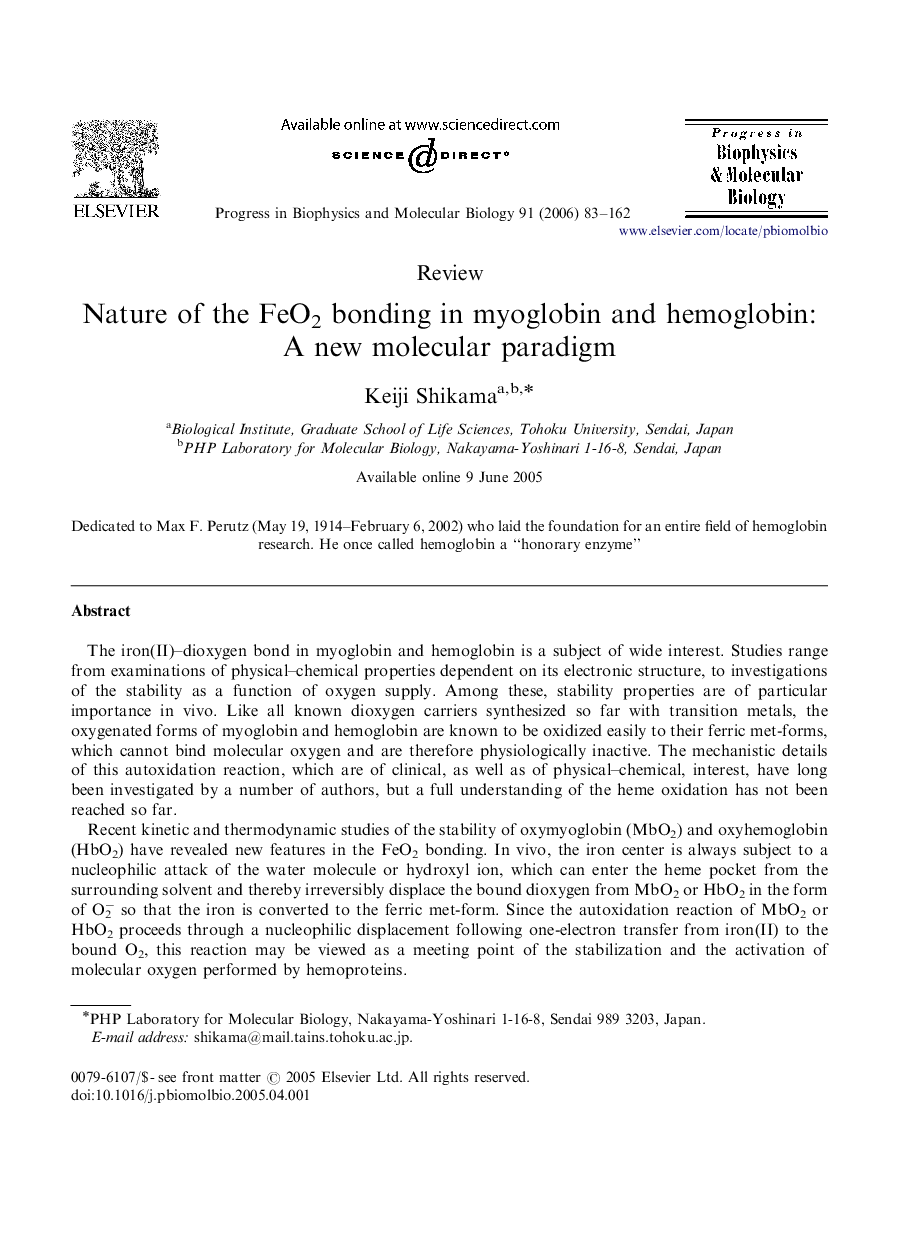| کد مقاله | کد نشریه | سال انتشار | مقاله انگلیسی | نسخه تمام متن |
|---|---|---|---|---|
| 2070657 | 1544500 | 2006 | 80 صفحه PDF | دانلود رایگان |

The iron(II)–dioxygen bond in myoglobin and hemoglobin is a subject of wide interest. Studies range from examinations of physical–chemical properties dependent on its electronic structure, to investigations of the stability as a function of oxygen supply. Among these, stability properties are of particular importance in vivo. Like all known dioxygen carriers synthesized so far with transition metals, the oxygenated forms of myoglobin and hemoglobin are known to be oxidized easily to their ferric met-forms, which cannot bind molecular oxygen and are therefore physiologically inactive. The mechanistic details of this autoxidation reaction, which are of clinical, as well as of physical–chemical, interest, have long been investigated by a number of authors, but a full understanding of the heme oxidation has not been reached so far.Recent kinetic and thermodynamic studies of the stability of oxymyoglobin (MbO2) and oxyhemoglobin (HbO2) have revealed new features in the FeO2 bonding. In vivo, the iron center is always subject to a nucleophilic attack of the water molecule or hydroxyl ion, which can enter the heme pocket from the surrounding solvent and thereby irreversibly displace the bound dioxygen from MbO2 or HbO2 in the form of O2− so that the iron is converted to the ferric met-form. Since the autoxidation reaction of MbO2 or HbO2 proceeds through a nucleophilic displacement following one-electron transfer from iron(II) to the bound O2, this reaction may be viewed as a meeting point of the stabilization and the activation of molecular oxygen performed by hemoproteins.Along with these lines of evidence, we finally discuss the stability property of human HbO2 and provide with the most recent state of hemoglobin research. The HbA molecule contains two types of αβαβ contacts and seems to differentiate them quite properly for its functional properties. The α1β2α1β2 or α2β1α2β1 contact is associated with the cooperative oxygen binding, whereas the α1β1α1β1 or α2β2α2β2 contact is used for controlling the stability of the bound O2. We can thus form a unified picture for hemoglobin function by closely integrating the cooperative and the stable binding of molecular oxygen with iron(II) in aqueous solvent. These new views on the nature of FeO2 bonding and the possible role of globin moiety in stabilizing MbO2 and HbO2 are of primary importance, not only for a full understanding of various hemoprotein reactions with O2, but also for planning new molecular designs for synthetic oxygen carriers which may be able to function in aqueous solvent and at physiological temperature.
Journal: Progress in Biophysics and Molecular Biology - Volume 91, Issues 1–2, May–June 2006, Pages 83–162